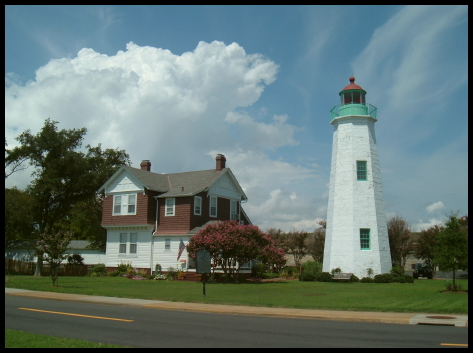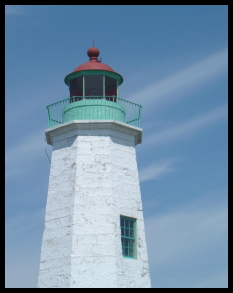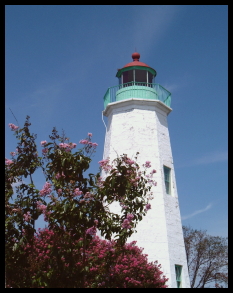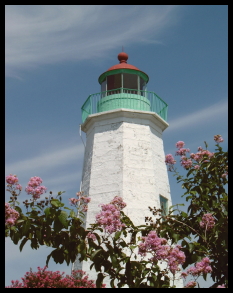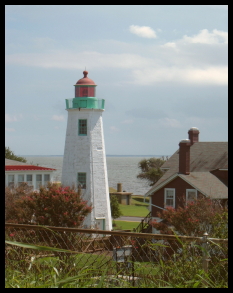Quickly recognized by the colonies as an important marine highway, the newly established United States government set about using lighthouses to mark the mouth of the Chesapeake Bay with the establishment of a light at Cape Henry. A number of lighthouses would later be established along the waterways of the bay to mark the treacherous shifting shoal and sandbars and also to guide ships into the inland river mouths that feed into the bay and the strategic ports located within.
In 1802, the Old Point Comfort light station was established with the construction of a fifty-four foot octagonal stone tower and a dwelling for keepers nearby. Marking the Hampton Roads area, the light station proved to be a such a vital aid to navigating the area, the British seized control of the light station for use as a lookout tower, which would later enable them to torch the Hampton area and eventually Washington D.C. during the war of 1812. Once the British were defeated, the US government commissioned the building of Fort Monroe in 1819. The largest stone fort ever built in the US, the fort
To visit the Old Point Comfort Lighthouse, take I-64 west from Norfolk toward Hampton. After you exit the tunnel, take the first exit which takes you to Mallory Street. Then turn right on Mellen Street and follow the signs to the fort. Once you reach the entrance to the fort, you must obtain a day pass from the guards. Since the Fort is still an active military post, you may be subject to a vehicle search. The guard will give you directions to reach the Old Point Comfort lighthouse if you need them.
took fifteen years to complete, as was built just to the west of the light station.
The lighthouse saw a number of important battles during the Civil War, including the famous battle between the ironclad Virginia and the Monitor. The tower managed to stay intact during the war and in 1875, a new keepers quarters was constructed, housing two keepers families until the lighthouse was automated in 1973.
Today, the lighthouse and its property is still part of the Fort Monroe complex. The lighthouse continues to operate nightly, with a flashing pattern of two seconds on, two seconds off, two seconds on, then six seconds of darkness. A portion of the lantern room glass is tinted red, signaling to “danger” to mariners, while mariners viewing white from the lantern are reassured that they are in safe channel.
The lighthouse is not open to the public to climb, but visitors are free to view the lighthouse from the street, which runs in front of it. There is a parking area across the street from the keeper's quarters, which is now a private residence. While visiting the lighthouse, be sure to visit Casemate Museum. Also, don't forget to look for the Thimble Shoals Lighthouse.
